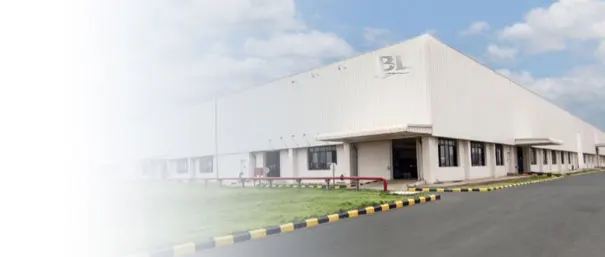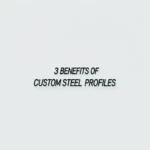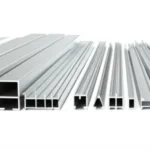In the vast landscape of materials engineering, stainless steel stands as a cornerstone, revered for its remarkable corrosion resistance, durability, and aesthetic appeal. However, the term “stainless steel” is not monolithic; it encompasses a diverse family of alloys, each engineered with specific properties to suit particular applications. Among the most widely used and often debated grades are 304 and 316. Deciphering the nuances between these two austenitic stainless steels is critical for engineers, manufacturers, and project managers seeking optimal performance and cost-effectiveness. This comprehensive guide will delve into the distinct characteristics, advantages, and limitations of 304 and 316 stainless steel, empowering you to make an informed decision for your next project, ensuring long-term success and reliability.


Understanding the Fundamentals: What Makes Stainless Steel “Stainless”?
At its core, stainless steel is an iron-based alloy containing a minimum of 10.5% chromium. This chromium reacts with oxygen in the atmosphere to form a passive, self-repairing oxide layer on the surface, which is largely responsible for its corrosion resistance. The addition of other alloying elements like nickel, molybdenum, and manganese further refines its properties, enhancing strength, ductility, and resistance to specific corrosive environments. Both 304 and 316 belong to the 300 series, which are austenitic stainless steels, meaning they are non-magnetic and cannot be hardened by heat treatment, but rather through cold working.
304 Stainless Steel: The Versatile Workhorse
Often referred to as “18/8 stainless steel” due to its typical composition of 18% chromium and 8% nickel, 304 stainless steel is arguably the most common and versatile grade available. Its popularity stems from an excellent balance of corrosion resistance, formability, and weldability, coupled with a relatively lower cost compared to its 316 counterpart. It exhibits good resistance to most oxidizing acids and is widely used in environments where moderate corrosion resistance is sufficient.
Key Characteristics of 304 SS:
- Corrosion Resistance: Excellent in non-saline or non-chloride environments. Resists most common rusting.
- Formability: Highly ductile and can be easily formed into various shapes, making it suitable for deep drawing and bending applications.
- Weldability: Readily weldable by all standard fusion methods, though post-weld annealing might be necessary to restore maximum corrosion resistance.
- Hygiene: Easy to clean and maintain, making it ideal for food and beverage applications.
- Cost-Effectiveness: Generally more economical than 316, making it a preferred choice for budget-conscious projects.
Common Applications for 304 SS:
From kitchen sinks and appliances to architectural paneling and chemical containers for less aggressive chemicals, 304 stainless steel is ubiquitous. It’s a staple in food processing equipment, dairy equipment, and even some outdoor applications where exposure to chlorides is minimal. At BaoLi Iron & Steel Co.,Ltd, we provide high-quality 304 stainless steel in various forms, including bright tubes and sheets, tailored for diverse industrial needs. Our comprehensive range of premium stainless steel products ensures that our clients receive materials that meet stringent quality standards for their specific applications.
316 Stainless Steel: The Marine Grade
While 304 is a great all-rounder, 316 stainless steel steps up the game, particularly in terms of resistance to pitting and crevice corrosion in chloride-rich environments. The key differentiating factor is the addition of molybdenum (typically 2-3%). This element significantly enhances its resistance to chlorides, making it the preferred choice for marine applications, chemical processing, and environments exposed to salt water or de-icing salts.
Key Characteristics of 316 SS:
- Superior Corrosion Resistance: Excellent resistance to chlorides, including salt water and many industrial chemicals, due to molybdenum.
- High-Temperature Strength: Exhibits better strength and creep resistance at elevated temperatures compared to 304.
- Improved Weldability: Similar to 304, it is readily weldable, but the molybdenum content generally reduces the risk of weld decay.
- Biocompatibility: Often used in medical and surgical applications due to its inert nature.
- Cost: Higher cost than 304 due to the addition of molybdenum and increased nickel content.
Common Applications for 316 SS:
You’ll find 316 stainless steel extensively used in marine fittings, boat parts, chemical and petrochemical equipment, pharmaceutical and medical devices, laboratory equipment, and outdoor architectural components exposed to harsh coastal environments. Its robust properties make it indispensable for demanding applications where failure due to corrosion is simply not an option.
304 vs 316: A Direct Comparison
To highlight the crucial differences and aid in your decision-making, here’s a comparative table summarizing the key aspects of 304 and 316 stainless steel:
| Feature | 304 Stainless Steel | 316 Stainless Steel |
|---|---|---|
| Composition | 18% Cr, 8% Ni | 16% Cr, 10% Ni, 2-3% Mo |
| Corrosion Resistance | Good for general use; susceptible to chlorides. | Excellent, especially against chlorides and pitting. |
| Heat Resistance | Good up to 870°C; prone to carbide precipitation above 425°C. | Better creep resistance and strength at high temperatures. |
| Cost | More economical. | Higher due to molybdenum and nickel content. |
| Applications | Kitchenware, general architectural, food processing (non-aggressive). | Marine, chemical processing, medical, pharmaceutical, harsh outdoor. |
Factors Guiding Your Stainless Steel Selection
Choosing between 304 and 316 stainless steel is not merely a matter of cost; it’s a strategic decision that impacts the longevity, safety, and overall success of your application. Consider the following crucial factors:
- Environmental Conditions: This is paramount. If your application involves exposure to chlorides (like salt water, swimming pool chemicals, or de-icing salts) or strong acids, 316 stainless steel is almost always the superior choice to prevent pitting and crevice corrosion. For less aggressive environments, 304 can be perfectly adequate and more cost-effective.
- Temperature: While both perform well at elevated temperatures, 316 offers better strength and creep resistance at higher heat settings, making it suitable for high-temperature industrial processes.
- Mechanical Properties: Both grades offer good strength and ductility. However, if enhanced strength at elevated temperatures is critical, 316 might be slightly more advantageous. Both are excellent for cold working.
- Cost-Benefit Analysis: 316 is more expensive than 304. Evaluate whether the enhanced corrosion resistance justifies the increased initial investment. In corrosive environments, the long-term cost savings from reduced maintenance, replacement, and downtime often outweigh the higher upfront material cost.
- Regulatory and Industry Standards: Certain industries, such as medical, pharmaceutical, and some food processing sectors, may have specific requirements or preferences for 316 due to its enhanced corrosion resistance and biocompatibility.
- Aesthetics: Both grades have a similar appearance, but their performance under specific environmental conditions will dictate their long-term aesthetic integrity. Rusting or pitting will degrade the appearance.
Your Trusted Partner for Stainless Steel Solutions: BaoLi Iron & Steel
At BaoLi Iron & Steel Co.,Ltd, we understand the critical importance of selecting the right material for your project. As a leading Chinese steel manufacturer, we specialize in providing premium quality stainless steel products, including both 304 and 316 grades, designed to meet the rigorous demands of various industries globally.
We offer a comprehensive range of stainless steel products, from bright tubes and sheets to plates, wires, pipes, bars, and coils, available in custom dimensions and specifications. Our core strength lies in our customization capabilities, allowing us to tailor steel materials precisely to your project’s unique requirements, whether it’s specific corrosion resistance, mechanical properties, or finish. Our experienced professional team provides invaluable technical support, guiding you through the selection process to ensure you choose the optimal grade for your specific application.
With a stringent quality control system in place, we guarantee that all our products, including our robust galvanized steel offerings and our diverse stainless steel inventory, adhere to the highest international standards. We are committed to achieving “100% customer satisfaction” through our reliable products and unparalleled global service, covering everything from production and transportation to contract management. Partner with BaoLi Iron & Steel for professional, reliable, and customer-centric steel solutions that empower your projects to succeed.
Conclusion: Making an Informed Decision
The choice between 304 and 316 stainless steel hinges on a thorough understanding of their respective compositions, properties, and the specific demands of your application’s environment. While 304 is an excellent, cost-effective choice for general-purpose applications with moderate corrosion risks, 316 stands out as the superior option for harsh, chloride-rich, or high-temperature environments where enhanced corrosion resistance is non-negotiable. By carefully evaluating your project’s needs against the strengths of each grade, you can ensure material longevity, reduce potential failures, and optimize your investment. Trust in the expertise of suppliers like BaoLi Iron & Steel to guide you toward the most suitable and highest quality stainless steel solution for your unique requirements.




